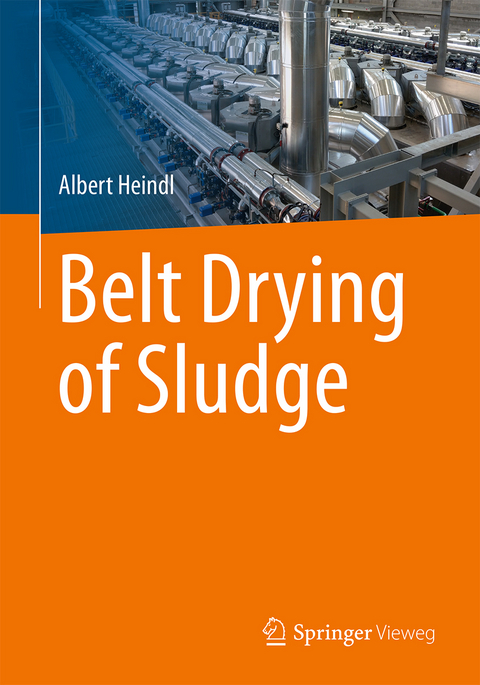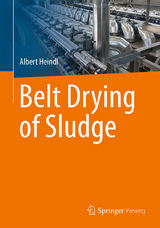Belt Drying of Sludge
Springer Berlin (Verlag)
978-3-662-66447-6 (ISBN)
- Lieferbar (Termin unbekannt)
- Versandkostenfrei innerhalb Deutschlands
- Auch auf Rechnung
- Verfügbarkeit in der Filiale vor Ort prüfen
- Artikel merken
This professional book deals with belt drying of sewage sludge, mainly of municipal but also of industrial origin. The wastewater treatment resulting in sludge production is briefly described. The types of sludge and their degree of stabilization is treated in depth as they have a high impact on their suitability for belt drying and the necessary exhaust air treatment. Different belt drying systems with or without condensing units and with extruding of dewatered sludge or partial recirculation of dried sludge are presented. Specific water evaporation and energy demand are tabulated for each dryer system on basis of indications of dryer manufacturers, measurements or information of dryer operators. Different sources for thermal energy are stipulated and complete systems of energy supply with internal or external usage of exhaust energy described. Occurring gas compounds in dryer exhaust air and their special features are mentioned in depth. The components andcomplete systems for exhaust air cleaning are discussed also in their efficiency of removal of individual odorous gas components or of total amount of volatile organic compounds. Conveying systems and storage of dewatered sludge as well as of dried sludge are described together with the related safety issues. Dryer control as well as ATEX, SIL and HAZOP issues and economic aspects are discussed briefly in individual chapters.
The book will be useful for engineering enterprises and consultants designing belt drying systems for sludge, but will also transfer useful information to operators. Also authorities dealing with the permission of sludge drying plants will find important aspects with regard to environmental protection and reasonable economic and continuous operation under safe conditions.Dr.-Ing. Albert Heindl studied mechanical engineering at the Technical University of Munich, followed by scientific work in the field of drying at the Fraunhofer Institute for Food Technology and Packaging in Munich. Doctorate at the chair for brewery equipment and packaging at the TU Munich/Weihenstephan on microwave vacuum drying of food. Then scientific assistant at the Institute for Agricultural Engineering in the Tropics and Subtropics, University of Hohenheim. Managing Director of Heindl GmbH, Maschinen- und Anlagenbau, Mainburg, specialising in belt and tray drying of agricultural products and foodstuffs. Subsequently, at Riela Karl-Heinz Knoop e.K., Riesenbeck, he was mainly responsible for the use of CHP waste heat from biogas plants for drying purposes in the area of fermentation residue and wood drying. Finally, team leader for drying in the sludge division of HUBER SE, Berching. Today Head of Research & Development in the sludge treatment division of HUBER SE.
Introduction.- Wastewater Treatment Plants and Processing Steps.- Kinds of Dewatered Sludge.- Technological and economic importance of sludge dewatering.- Belt drying of sewage sludge.- Exhaust air and condensate treatment.- Sludge analysis with regard to belt drying and exhaust air treatment.- Storage of dewatered sludge.- Conveying of dewatered and dried sludge.- Properties and Storage of dried sludge.- Pellet Forming of Dried Sludge.- Risks from belt drying plants for sewage sludge.- Important points for successful mounting, commissioning and operation of belt dryers.- Legal Framework and Economics.- Analysis of waste water, sludge and dewatered sludge with regard to sludge drying.- Definitions and basic explanations.
| Erscheinungsdatum | 31.01.2024 |
|---|---|
| Zusatzinfo | XVI, 269 p. 123 illus. |
| Verlagsort | Berlin |
| Sprache | englisch |
| Maße | 168 x 240 mm |
| Gewicht | 492 g |
| Themenwelt | Naturwissenschaften ► Chemie ► Technische Chemie |
| Technik ► Maschinenbau | |
| Schlagworte | Belt cooler • biomass • Chemical Industry • Process Engineering • Thermal Treatment • Waste Treatment Solutions |
| ISBN-10 | 3-662-66447-X / 366266447X |
| ISBN-13 | 978-3-662-66447-6 / 9783662664476 |
| Zustand | Neuware |
| Informationen gemäß Produktsicherheitsverordnung (GPSR) | |
| Haben Sie eine Frage zum Produkt? |
aus dem Bereich




